
Chimney colony at Brynsiencyn 22 July 2011
Bees were first noticed coming into the bedroom below the chimney about a fortnight previously. There was no access to the former fireplace as there was a built in wardrobe in front of it.

Bees were entering through an 'elephant's foot' cap. Which was held in place with a thin ring of mortar.
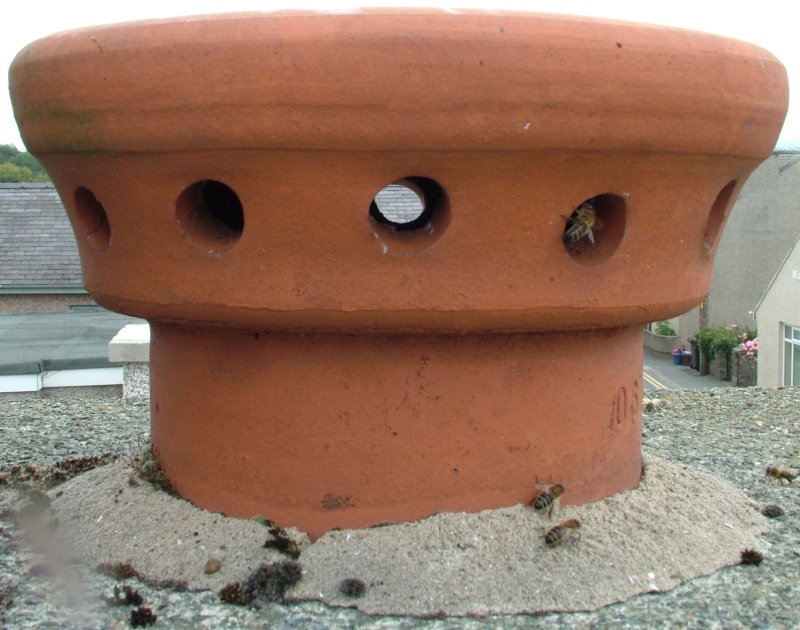
When the mortar, which was very loose, was removed, it turned out that the cap was merely resting on the chimney capping slab. Thus, what might have been a nine inch access hole to the flue turned out to be only a rectangle of 3 x 4 inches. This made extracting the combs somewhat difficult. There were five combs, the longest being 230 mm. One and part of another fell down the flue during the extraction.
Below: Bees on top of the combs.
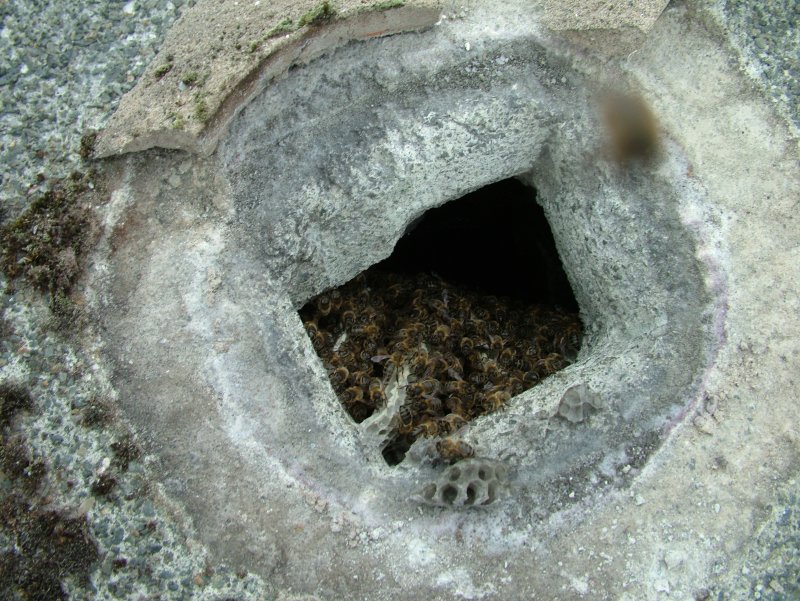
Below: Combs partly cleared of bees with a bee vacuum which takes all but a very few of them alive.
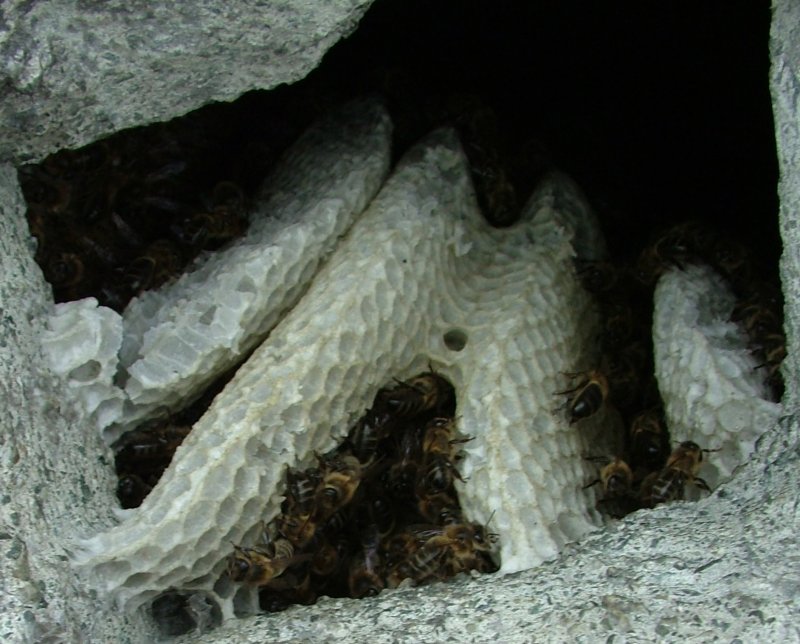
Below: Use of bent pipe to access bees under the capping slab.
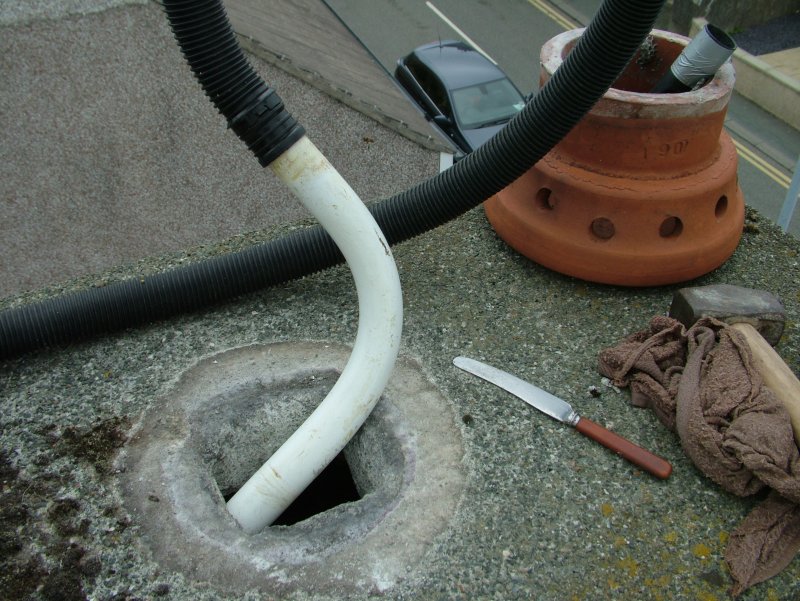
Below: Some combs removed.
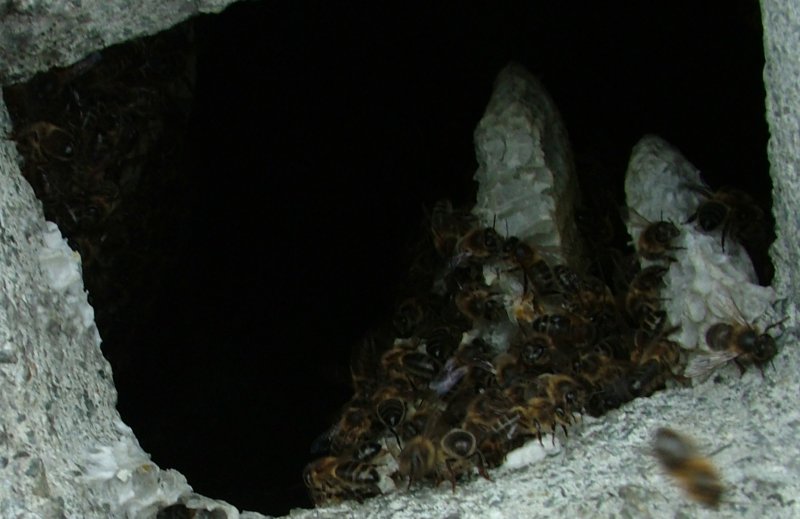
Below: Comb with pollen (orange cells), larvae and eggs. There was no capped brood, indicating that the first observation of bees in the house coincided with the arrival of the swarm.
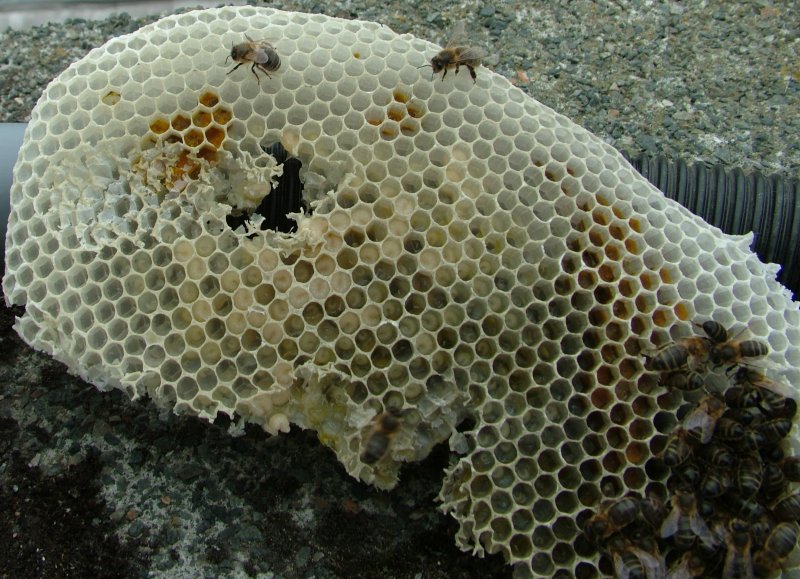
Below: View of top of flue.
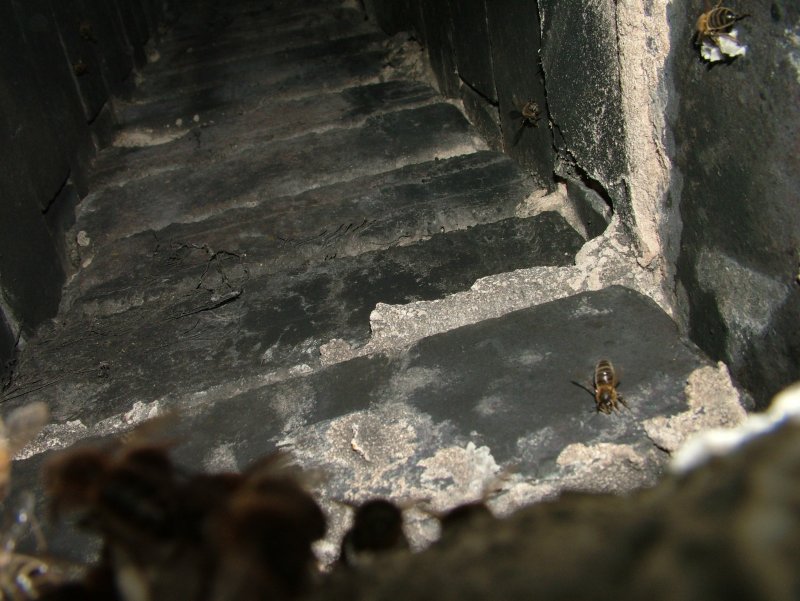
Below: View to first bend in the flue.
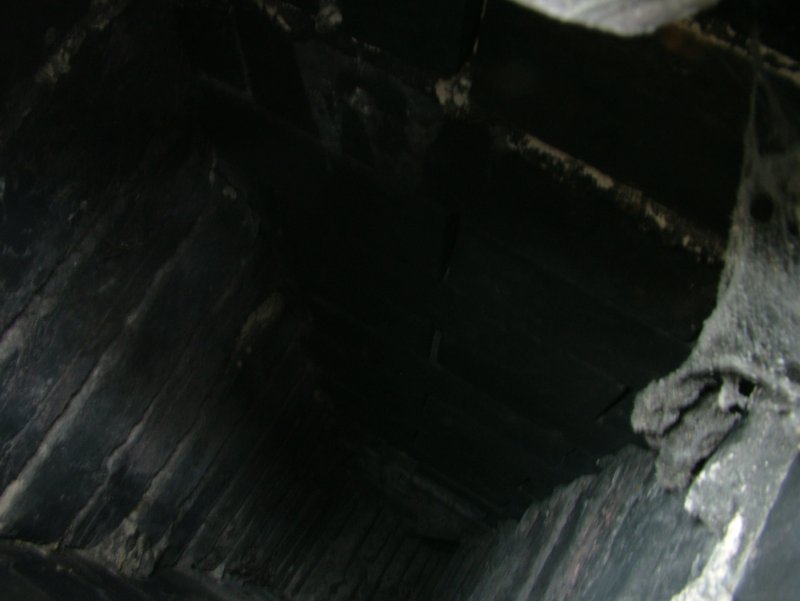
After the bees and comb were removed the cap was temporarily replaced. After this photo was taken, a 12-inch square piece of polypropylene garden windbreak mesh was inserted below the cap as an extra barrier to bees and to be available for use as an insect-proof barrier when the flue is re-capped. The old comb adhering to the inside of the cap indicates that there had been bees in the colony previously, although its nest, if any, had almost completely disappeared.
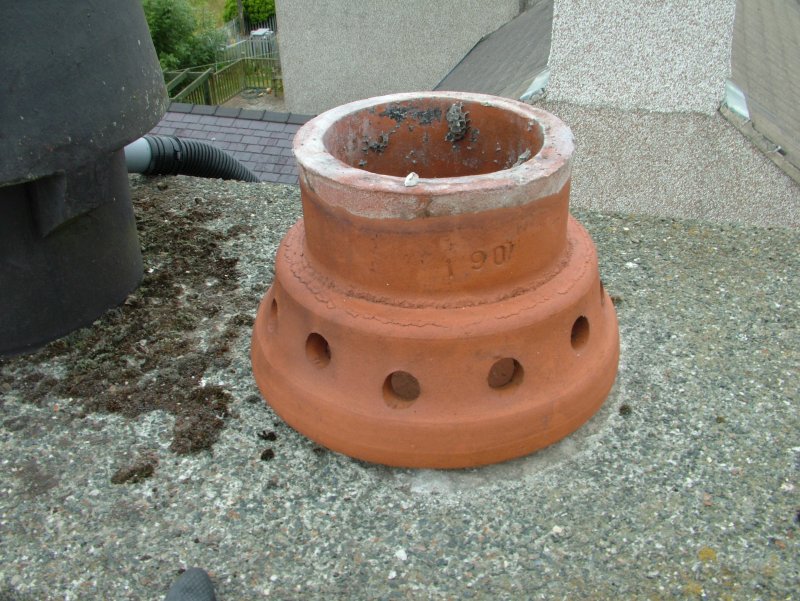
David Heaf's bee removals index